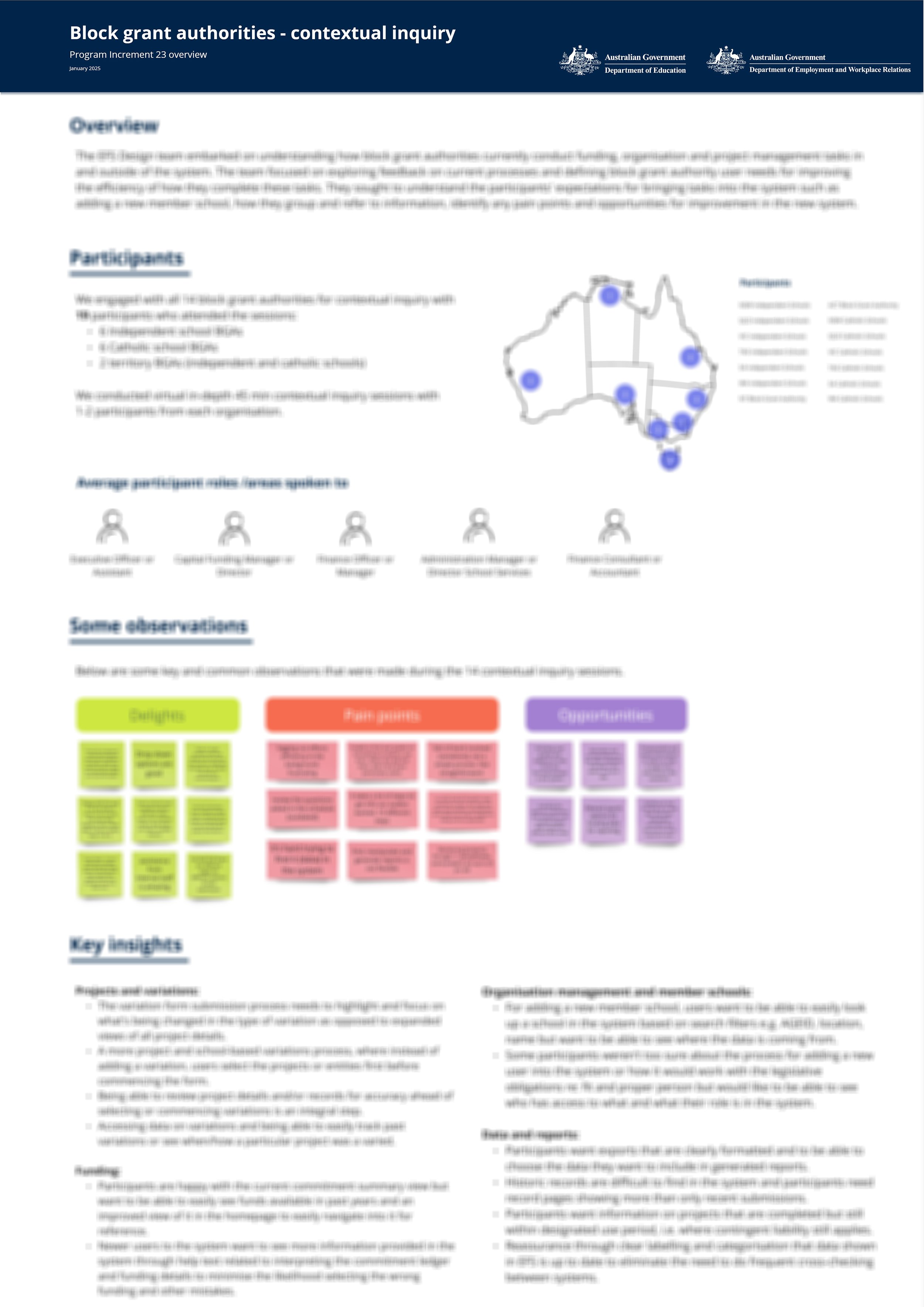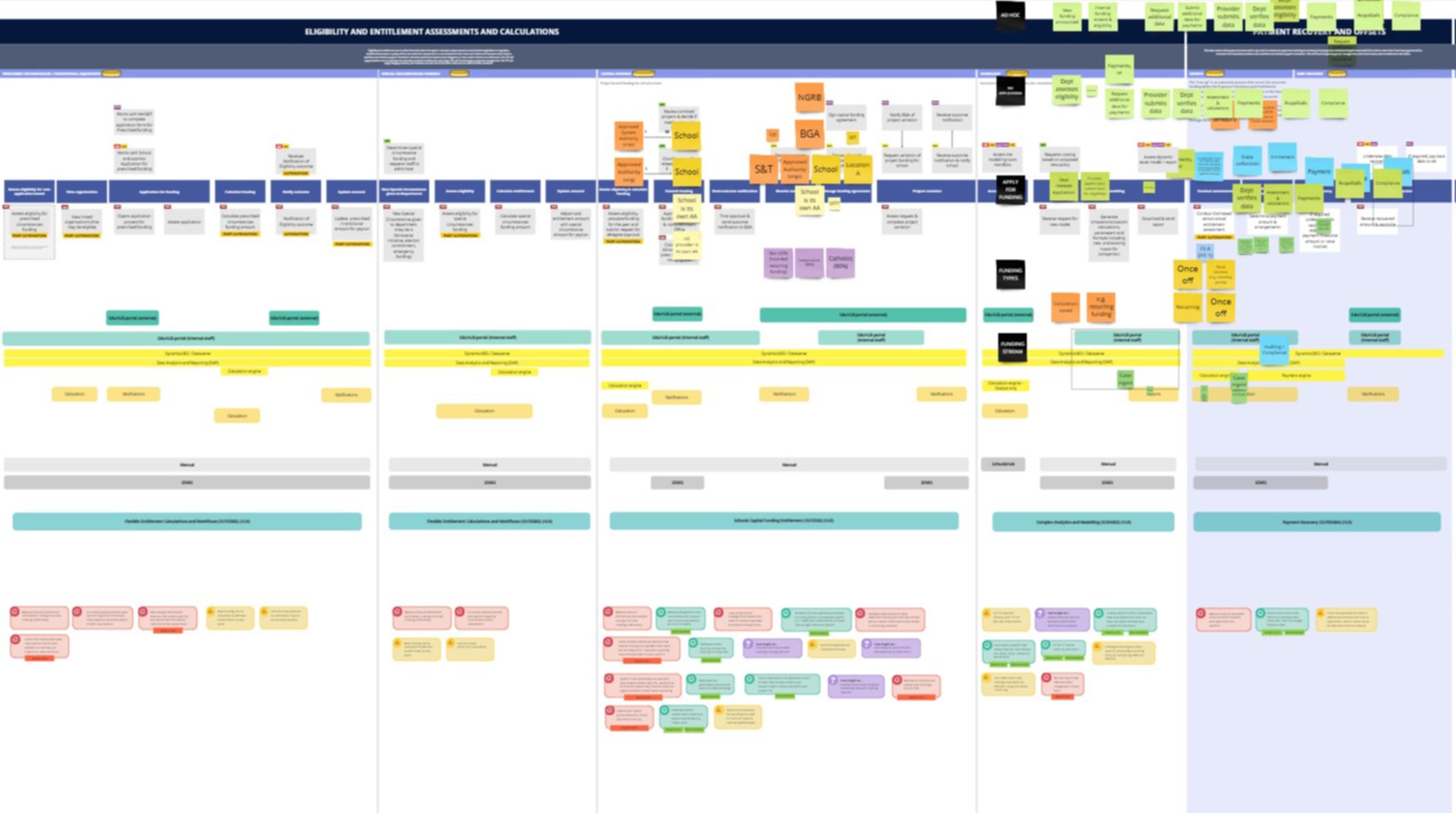Education Funding System: Enhancing Education Funding Through Collaborative Design.
The Education Funding System for the Department of Education was modernised using a research-driven service design approach. User research, including contextual inquiry and card sorting, shaped an intuitive, adaptable platform addressing complex funding models and clear communication among educational institutions and government stakeholders. Design and research cadences aligned with scrum teams, fostering efficiency. The result is a scalable, user-friendly system that delivers transparent funding processes and meets evolving institutional needs.


Project Overview:
A Dripping Agency design lead contributed to the Education Funding System for the Department of Education. Alongside other team members, the assignment involved creating a modern platform to improve how funding is allocated to schools and higher education providers across Australia. Beyond facilitating transactions, the platform needed to handle complex funding models, ensure transparency, and streamline communication between educational institutions and government bodies.
Initial efforts focused on service design, informed by both internal and external research. Engaging with schools, universities, and other higher education providers yielded insights shaping the platform’s architecture, user flows, and overall experience. The objective was to design a system that is intuitive, efficient, and adaptable to diverse institutional requirements.
Approach:
Two key cadences guided the process: a Design Cadence and a Research Cadence. The Design Cadence supported iterative design activities, from wireframes to high-fidelity prototypes, and aligned with multiple scrum teams to ensure accurate implementation.
The Research Cadence gathered qualitative and quantitative data at regular intervals. This comprehensive feedback loop included internal and external sources, leading to the creation of user personas, journey maps, and service blueprints that reflected both the current state and future vision of the service.
Research Strategy and Execution:
Research was central to the project, employing contextual inquiry, usability testing, and TreeJack studies to understand how educational institutions interacted with the system. These methods highlighted usability challenges and shaped the platform’s information architecture.
Card sorting exercises further clarified how users naturally organise content, informing content strategy and design. Collaboration with industry stakeholders—including school administrators and university staff—identified inefficiencies and opportunities for improvement. Internal teams also provided critical input on technical requirements and system constraints, creating a well-rounded research foundation.
Design Process and Outcomes:
The design phase produced a range of artifacts, including journey maps, service blueprints, wireframes, and high-fidelity prototypes. Journey maps and service blueprints offered a holistic view of user interactions, key processes, and stakeholder touch points, establishing a unified project vision.
A structured Figma file ensured easy access, reusability, and real-time updates for design components, supporting multiple scrum teams while maintaining consistency. Close collaboration between design and development teams facilitated regular reviews, quick issue resolution, and continual refinement before finalising the product.
Conclusion:
The Education Funding System design succeeded through a structured, research-driven strategy that merged service design principles with iterative user input. Clear Design and Research Cadences, stakeholder engagement, and effective use of collaborative tools resulted in a user-friendly and efficient platform that meets the needs of educational institutions. The solution also establishes a scalable foundation, ready to adapt as funding models and user needs evolve, reflecting a comprehensive approach that balances functionality with user empathy.
